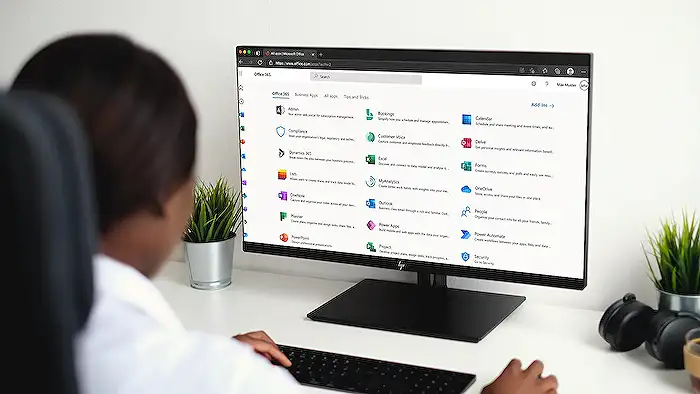
Outlook Tips: 6 Rules to Organize Your Inbox Fast
No-Faffing Managed IT Support & Cyber Security Support. Made in Yorkshire, built for the UK.
Outlook, Microsoft 365, Inbox Rules, Productivity, Email Management, Task Prioritization, Workflow Streamlining
Key insights
- Outlook Rules are automated instructions in Microsoft Outlook that help manage incoming and outgoing emails by using set conditions such as sender, subject, or keywords. When an email matches a rule, Outlook can move, flag, forward, or delete it automatically to keep your inbox organized.
- Save Time and Stay Organised: Automating tasks like sorting and categorizing emails lets users focus on important work. This keeps the inbox tidy and makes finding key messages easier.
- Reduce Inbox Overload: By filtering out less important messages and organizing them into folders, users experience fewer distractions and can better focus on critical emails.
- Improve Response Time: Highlighting or prioritizing essential emails helps ensure you respond quickly to urgent matters.
- Enhance Collaboration: Outlook Rules can automatically forward relevant emails to team members based on certain criteria. This supports better teamwork and reduces manual forwarding.
- New Features & Tutorials: Recent updates offer step-by-step guides for setting up advanced rules. These new resources show how to automate both simple tasks and more complex workflows for efficient email management.
Introduction: Streamlining Email Management with Outlook Rules
In today’s digital-first work environment, professionals are constantly seeking ways to manage their overflowing inboxes. Jonathan Edwards, in his recent YouTube video titled “Master Your Inbox: 6 Outlook Rules to Streamline Your Workflow,” explores how Microsoft Outlook’s rule-based automation can help users regain control and improve productivity. By demonstrating practical rule setups, Edwards offers viewers actionable strategies to save time and reduce distractions.
As email remains a primary communication tool, balancing efficiency with organization is increasingly vital. Edwards’ insights come at a time when many are looking for simple yet effective solutions to optimize their daily workflow. His video serves as a guide for both new and experienced Outlook users eager to streamline their inbox management.
Understanding Outlook Rules: Automating the Mundane
Outlook Rules, as explained by Edwards, are automated instructions set within Microsoft Outlook to manage incoming and outgoing emails. Users can define conditions based on sender, subject, or keywords, prompting Outlook to perform actions like moving, flagging, forwarding, or deleting messages. This automation is designed to prevent critical emails from getting lost in clutter and to minimize manual sorting tasks.
The video emphasizes that setting up these rules does require an initial investment of time and thought. However, once active, they can significantly reduce repetitive actions and allow professionals to focus on higher-priority work. Edwards illustrates these points by walking viewers through real-life scenarios where rules can be applied, such as automatically archiving newsletters or highlighting urgent emails.
Advantages and Tradeoffs: Boosting Efficiency Without Losing Control
One of the primary advantages highlighted is the substantial time savings. By letting rules handle routine sorting and prioritization, users can dedicate their attention to more meaningful tasks. Furthermore, rules can help maintain a tidy inbox, making it easier to locate important messages and reducing the stress of email overload.
However, Edwards also acknowledges the tradeoffs involved. Over-reliance on automation can occasionally lead to important emails being misfiled or overlooked if rules are not carefully crafted. He advises viewers to periodically review and adjust their rules, ensuring they align with evolving priorities and communication patterns. This balance between automation and oversight is crucial for maintaining both efficiency and accuracy.
Setting Up and Customizing Outlook Rules: Practical Steps
Edwards breaks down the process of creating Outlook Rules into manageable steps. First, users should identify repetitive tasks that could benefit from automation, such as moving emails from specific senders or categorizing newsletters. Next, they define the rule’s conditions—these might include keywords, sender addresses, or message importance.
After setting conditions, users choose the corresponding actions, such as moving emails to designated folders or flagging them for follow-up. Edwards recommends testing new rules on a few emails to ensure they perform as intended. He also showcases how rules can be layered or combined for more complex workflows, such as automatically forwarding certain messages to team members while archiving others.
What’s New: Evolving Features and Modern Workflows
According to Edwards, recent updates to Outlook and new tutorial resources have made it easier than ever to implement advanced rules. He notes that improved collaboration features now allow rules to support team-based workflows, such as forwarding project-related emails to specific colleagues automatically. This evolution reflects the growing demand for smarter, more collaborative tools in modern workplaces.
Moreover, Edwards points out that the latest best practices encourage users to not only automate basic actions but also to refine their rule sets regularly. This ongoing adjustment helps users adapt to changing work habits and ensures that their inboxes remain efficient and responsive to their needs.
Conclusion: Achieving Balance for Lasting Productivity
In summary, Jonathan Edwards’ video provides a comprehensive look at how Outlook Rules can transform email management. By automating repetitive tasks and thoughtfully customizing rules, users can reclaim valuable time, reduce inbox clutter, and respond more effectively to critical messages.
Nevertheless, the key challenge lies in maintaining oversight and adapting rules as workflows evolve. Striking the right balance between automation and manual review remains essential for maximizing productivity while minimizing errors. As Edwards demonstrates, mastering Outlook Rules is a worthwhile investment for anyone aiming to work smarter in today’s fast-paced digital landscape.

Keywords
Outlook rules email management inbox organization productivity tips workflow automation time-saving Outlook tips email filtering